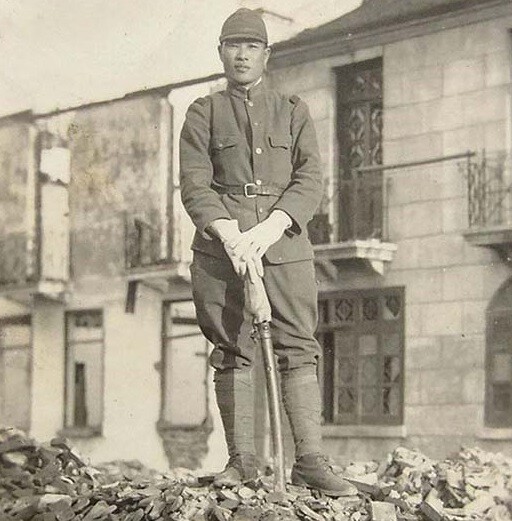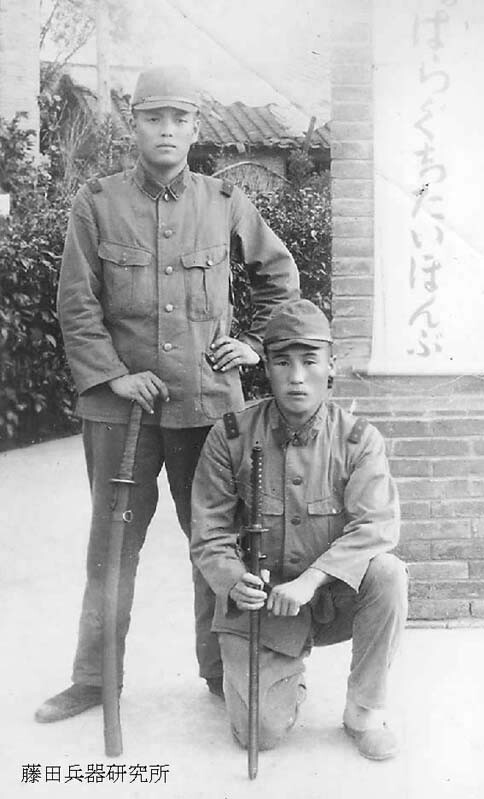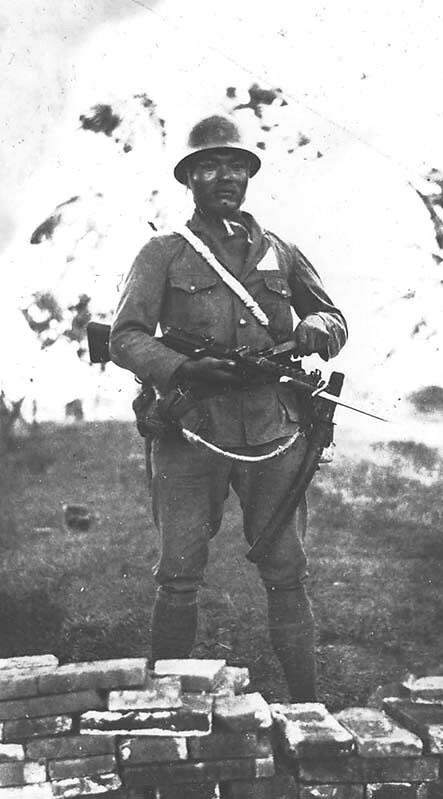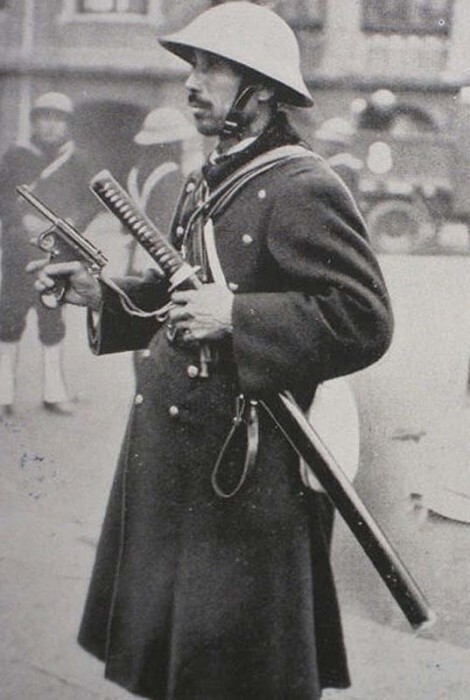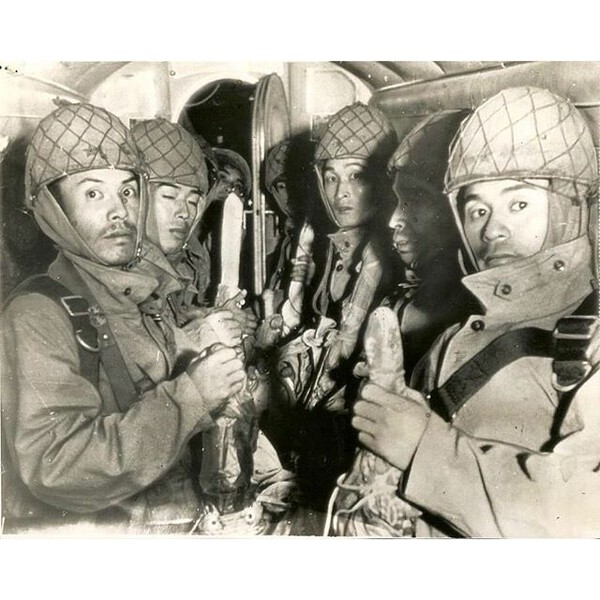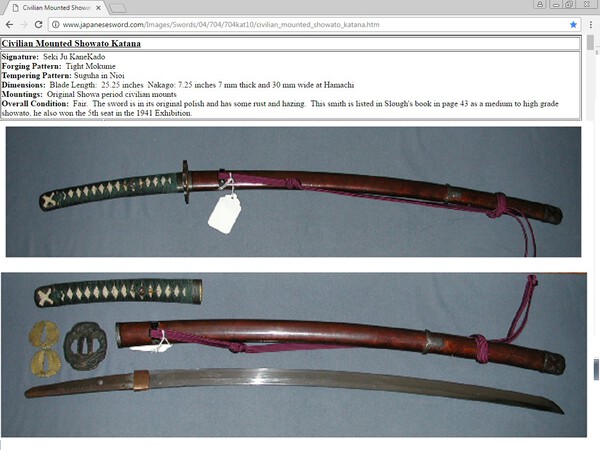-
Posts
1,690 -
Joined
-
Last visited
-
Days Won
11
Content Type
Profiles
Forums
Events
Store
Downloads
Gallery
Everything posted by Dave R
-
Apparently there was a bit of a revival (or survival) of sword arts in the early Showa era, and where there is a demand there is a supplier. All part of the Nationalist zeitgeist and reverence for the Samurai era. If a Nihonto was too expensive, (or too battered) then you got a nice blade that looked OK and did the job, and that's where you get these Buke-zukuri showato from.... Then when the war erupts and you get your movement orders on goes the field cover and off you go. Well that's my interpretation of some of these oddities that turn up with nice but non traditional blades imitation Edo mounts, and dates before the Wars really got going. I have pics of some very varied swords with hybrid mounts, and pretty but non traditional Hada, eg Amahide mixed metal specials and etc. Some discussed with a fair bit of heat on this very site. As for military contracted civilians, "Gunzoku", Mr Komina is very certain that they were as tightly regulated as IJA personnel, though I will say myself that surviving swords indicate a lot more leeway than he is happy to accept. Then again, he says himself that he is not a "sword man"!
-
Anyone who could pay for a sword could order one, certainly up to the time when production could no longer keep pace with Military demand. This is why you get Showato in Civilian Koshirae. We tend to be prejudiced in favour of traditional blades here, but I do wonder if the attitude was different when buying a blade your life would depend on. Amahide was a traditionally trained swordsmith, but concentrated on his factory produced blades. There was also another smith who worked mainly in "modern" steel, and if I remember right he made them as "spring-to", and the bulk of his swords were bought by Officers in the Imperial Guard. The swords were renowned as good cutters, and that was what was important. Worth having a good peruse of this site for more on the subject... Military Swords of Imperial Japan (Guntō)
-
You can never post too many photo's of a sword.
-
Kabutogane are distinctive of traditional Tachi, the old style sword on two hangers, and of Handachi which have the hilt mounts of the Tachi, but worn edge up through the sash/obi like a Katana. The oldest style Tachi don't have Ito, just lacquered Same so the kabutogane has to be fixed on some other way. And of course there are tachi that do not have kabutogane, because.... Japan! The Shin Gunto was modelled on a 14th century Tachi, with some modifications for production reasons, and for practical use on a modern field.
-
Brass hilt, 'nuff said.
-
You do realise that some idiot will quote this as a reference!
-
Hiya Micheal, is this the clip you mean... https://www.youtube.com/watch?v=0llB--aUnIc . (To share a clip or link... Left click the address bar, so that it turns blue. Right click to open menu, left click "copy". Go to other page and right click "paste", and there you have it.) An interesting clip for all sorts of reasons, civilian passenger aircraft as a Para' transport, and as you point out short swords definitely shown as used in the field.... Along with standard Shin Gunto. The conversation is not about if these blades went to war, they absolutely did, and is not even if they went into 'planes, tanks and submarines, because they certainly did. The conversation was about if such were exclusively or specifically used as crew weapons,.... and there are too many pic's of them in other circumstances for that theory to hold water. Many thanks for the title of the film, it's a stunner.... even if, as I think, it's a propaganda melange of different clips.
-
For me the leather combat cover would be the clincher, a sure sign of a sword intended to be taken regularly into combat. Sometimes they seem to have taken whatever was to hand, and would do the job.
-
A better bet is a piece of bamboo kitchen ware (spatula or spoon), or even better a bamboo knitting needle, either of which uses better grade material than a chopstick. I shape and finish them by putting the bamboo into a drill chuck and using a file as it rotates.
-
-
I have a vague memory, (so don't kill me) that if a blade went wrong in some manner, wrong curve, too brittle, whatever, it would be corrected with an oil temper.... This may or may not follow after a traditional water quench. I have no references for this, just a memory of something popping up on a thread on one of the four different sword sites I follow. There is also the possibility of a hand forged blade going to oil tempering because the smith was not confident of his skill, or of the metal of the blade. Water quenching is very harsh, and had/has a high failure rate. Oil tempering might not be art, but it was practical and delivered a good using sword. If it is a Showato, then it is on it's second set of mounts, and I would guess it was one of those Showa era blades in Buke Zukuri that were popular before the war, and then put into Shin Gunto koshirea. There were some funny variations on blade making in the early Showa.
-
Regarding the wakizashi, and its potential status as a battlefield pickup, people might find this an interesting thread.... http://www.warrelics.eu/forum/Japanese-militaria/civilian-wakizashi-use-wwii-how-common-739325/
-
Just to add, highly desirable, and fetch more money than the standard NCO sword. The shorter blade is a wakizashi, and there are a couple of interesting conversations about them in a WW2 context.
-
Have you posted it over here?.....Japanese Militaria
-
Two mekugi-ana so a blade with some age,(remounted at least once) and so most likely traditionally made.
-
It will have been fitted to a blade, the question would be what kind of blade, new made for the occasion, or an old high status piece with a number of different mounts. You get Western swords made for high ranking and Royal status officers that are in even better condition, and older in date. It all depends on use, abuse, preservation and maintenance.
-
https://en.wikipedia.org/wiki/Prince_Yasuhiko_Asaka
-
I am not really going to bother commenting on the first example, it's so bad that it's not worth discussing. The second one displays two of the major "tells" for being a Chinese made fake, the Ito (wrap) and the Habaki. I suggest spending time on the internet googling pictures of real Nihonto and Gunto, and having a few (many) hours going through the posts here.
-
I had similar thoughts myself, but without a reference was wary of posting. All to many variant swords get labelled as NLF, but in this case I think you are right on the button.
-
Indeed. I linked to the other discussion to save effort and share information. When two threads parallel each other in their subject it's well worth reading both.
-
You will probably get more responses posting in the military sword section.
-
My first Wakizashi cost me £4,10 shillings, the shilling symbol isn't even on the keyboard anymore it was so long ago... So what? That was then, this is now!
-
in 1948, your modern money would be no good, vintage money of the era fetches a fair bit in itself, and one mistake would put you in the hands of Area 51 interrogators.





